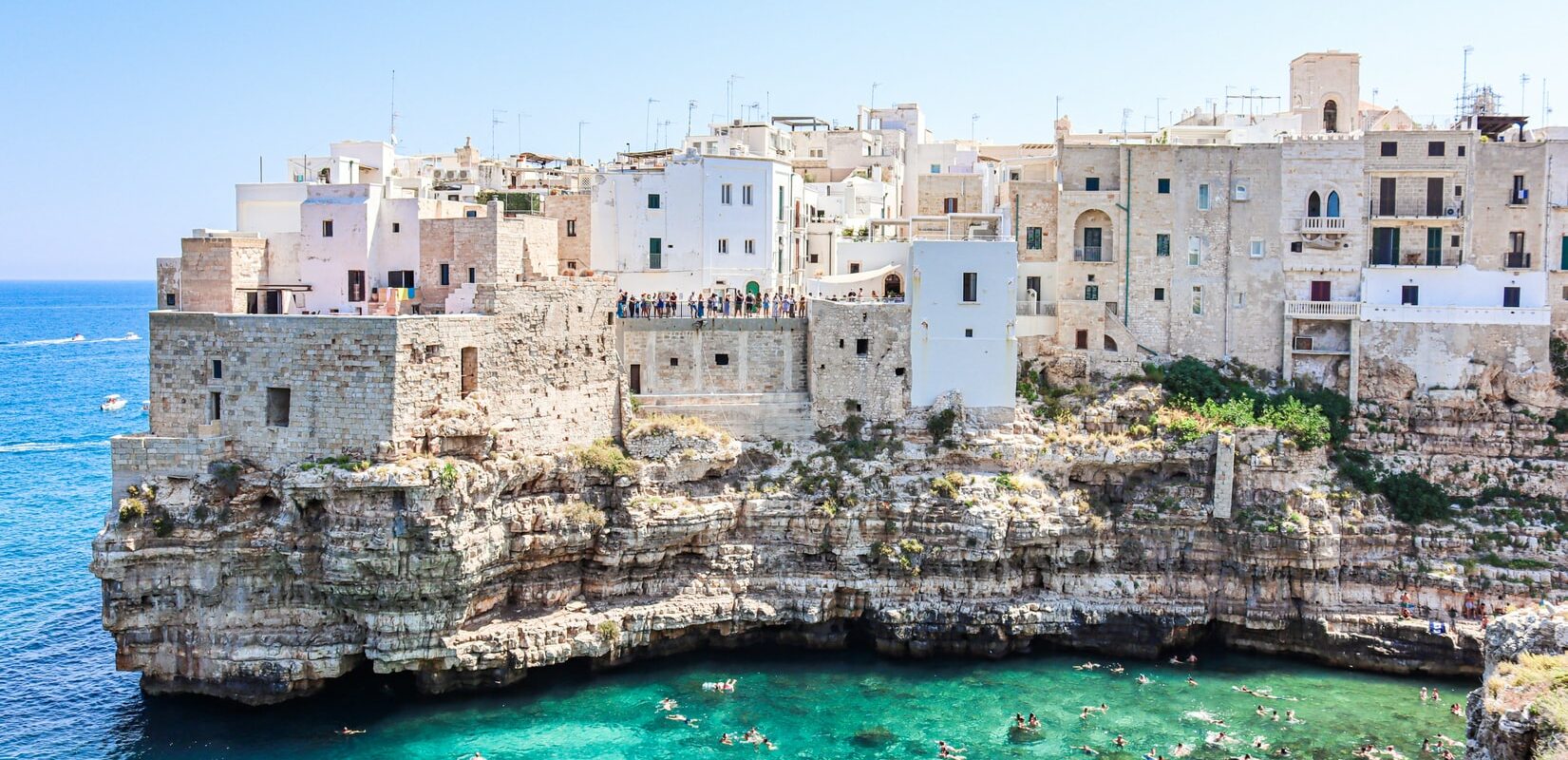
Polignano a Mare
Polignano a Mare: history and conformation
A bit of history before telling you what to see absolutely in Polignano a Mare. Polignano has a very ancient history, but it reached its splendor during the Roman period, when it became a hub for the distribution of traffic on the Brindisi-Rome route. It was with the advent of the Normans that the fame and prestige of Polignano grew even more, thanks to the presence of the Benedictine monks who made it an area no longer a passage but a nerve center for concluding business and where to seek shelter and rest. The passage under the Republic of Venice is still visible today thanks to the presence of the Doges' Palace. The town is now divided into two areas with the oldest part standing on a rock overlooking the sea.
How to get to Polignano a Mare
Polignano by train
Polignano a Mare is served by the railway station of the same name and to reach it you need to arrive at the Bari station from where you can take a regional train. The train runs regularly and the ride from Bari to Polignano a Mare takes about 20 minutes.
Polignano by bus
The bus is a solution to consider if you travel within the Bari area but in general it is the least comfortable solution to reach Polignano from other areas of Italy, because there are not many direct connections.
Polignano by car
To reach Polignano a Mare by car you have to follow the A14 motorway to Bari which you take following the A2 Rome-Naples followed by the A16 Naples-Canosa. Once you have taken the A14 you have to exit onto the SS16 (E55) where the entrances to Polignano are located. If you are already in the area, you can opt for the provincial roads that connect the hinterland to the town and specifically Conversano-Polignano and Castellana Grotte-Polignano.

